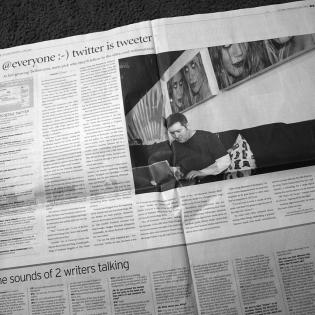Reporting on an Ideal World
The learner will:
- envision an “ideal world” characterized by justice, peace, kindness and belonging.
- apply these principles by writing a newspaper about this ideal world.
Draw a picture of an ideal world as it relates to one issue, such as fair pay for all or no war.
Instructions
Anticipatory Set:
Imagine a newspaper called USA Tomorrow, a visionary newspaper that describes an ideal civil society characterized by the civic virtues of justice, kindness, peace, and belonging – it is an ideal world.
Organize the group into seven groups with the responsibility to prepare their section of the paper, which may include nation, world, letters, opinion, money, sports, and life.
They may preview these sections of USA Today to become familiar with the format and news topics included in that section. In the next visioning discussion, they will each be thinking from the perspective of their assigned section.
In small groups or the full group, talk about what this ideal world would be like (envision it as if it were true) in which justice, kindness, peace and belonging are the norm. How do people act? What is life like? What is the status of issues like hunger, climate, political differences, gun control, and so on?
Then, discuss how we got to this point. What were the steps that took us to this ideal world?
The seven groups each write an article (appropriate for their section) as if they were writing about current events in this ideal world.
Have each group present their section of the newspaper to the other members of the news team for editorial review. After revisions and edits, put the pieces together and publish an issue of USA Tomorrow for others to read.
Each young person writes a paragraph about one step they can take to move toward this vision of an ideal world come true.
Young people share a short piece of writing on social media to promote their ideas for peace, justice, and fairness. They share the response they get from their network.
Philanthropy Framework
-
Strand PHIL.I Definitions of Philanthropy
-
Standard DP 01. Define Philanthropy
-
Benchmark HS.2 Identify and discuss examples of philanthropy and charity in modern culture.
-
-
-
Strand PHIL.II Philanthropy and Civil Society
-
Standard PCS 01. Self, citizenship, and society
-
Benchmark HS.4 Describe and give examples of characteristics of someone who helps others.
-
-
Standard PCS 05. Philanthropy and Government
-
Benchmark HS.2 Discuss civic virtue and its role in democracy.
-
-
Standard PCS 07. Skills of Civic Engagement
-
Benchmark HS.2 Discuss a public policy issue affecting the common good and demonstrate respect and courtesy for differing opinions.
-
Benchmark HS.3 Participate in acts of democratic citizenship in the community, state or nation, such as petitioning authority, advocating, voting, group problem solving, mock trials or classroom governance and elections.
-
-
-
Strand PHIL.III Philanthropy and the Individual
-
Standard PI 01. Reasons for Individual Philanthropy
-
Benchmark HS.4 Cite historical examples of citizen actions that affected the common good.
-
-
-
Strand PHIL.IV Volunteering and Service
-
Standard VS 01. Needs Assessment
-
Benchmark HS.1 Identify a need in the school, local community, state, nation, or world.
-
-
